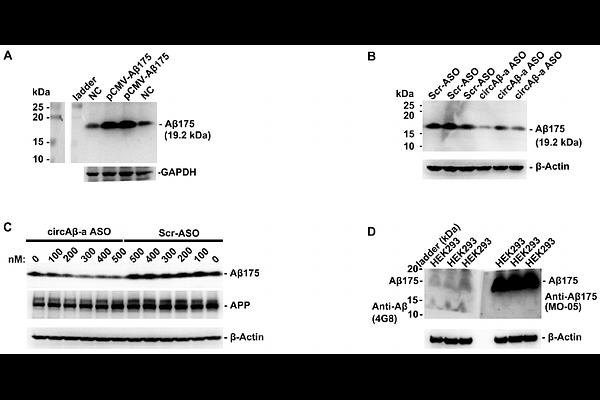circAβ-a RNA encoded Aβ175--the hidden driver of β-amyloid plaque formation and deposition in sporadic Alzheimer's disease.

circAβ-a RNA encoded Aβ175--the hidden driver of β-amyloid plaque formation and deposition in sporadic Alzheimer's disease.
Mo, D.; Zhao, Y.; Liu, Y.; Brosius, J.; Xiao, G.
AbstractMechanisms that trigger A{beta} production in sporadic Alzheimer\'s disease are still obscure. We recently reported the expression of a human circular RNA (circA{beta}-a) encoded A{beta} peptide precursor variant (A{beta}175). Presently, we demonstrated that AAV9 virus-expressed circA{beta}-a gave rise to extensive extracellular A{beta} plaque depositions and microglial activation in mouse brain; this recapitulates critical pathogenic hallmarks within a sporadic AD mouse model. Specifically developed antibodies detected robust endogenous A{beta}175 expression in HEK293 cells and hNSC-derived human neurons, underscoring the potential of A{beta}175 as a salient A{beta} precursor. Furthermore, we detected high levels of A{beta}175 oligomers in young-adult human brains. In intermediate and old-age human brain samples, accumulation of soluble A{beta}175 pentamers was reduced and A{beta}175 oligomers were components of most insoluble A{beta} plaques in older human brain. We propose a causal relationship between human circA{beta}-a RNA expression, dysregulation of A{beta}175 oligomer processing/aggregation and A{beta} plaque accumulation in sporadic AD.